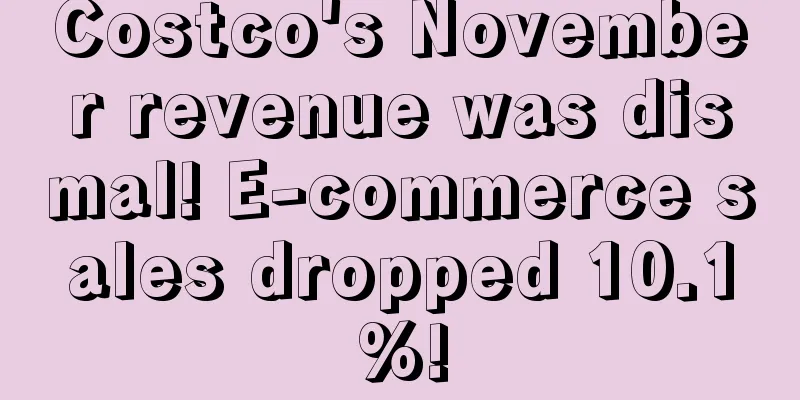In 2023, many US retail giants will go bankrupt. Who can fill the market gap?

|
It is learned that since 2023, many US retail giants have declared bankruptcy, including Bed Bath & Beyond, David's Bridal and Party City. As the competition for consumer purchasing power becomes more and more fierce, the exit of these giants has brought new growth opportunities to other competitors. Some competitors may benefit from it, while others may not be able to seize the opportunity due to their own reasons.
eMarketer took a look at the retailers that have declared bankruptcy so far and revealed which ones were able to fill the gap in the market and which ones were unable to seize the opportunity.
1. BedBath&Beyond
After a long period of struggle, American home furnishing retail giant Bed Bath & Beyond filed for bankruptcy on April 23. As the company begins to liquidate its merchandise and gradually close stores, there has been a lot of speculation about which retailers will benefit most from Bed Bath & Beyond's exit.
Retailers who benefit:
For consumers who value price and convenience, Amazon is the most likely to fill the market gap left by Bed Bath & Beyond. eMarketer predicts that Amazon's furniture and home furnishings sales will grow nearly 10% this year to $49.58 billion, becoming Amazon's third-largest category. However, this only accounts for 27.6% of Amazon's total e-commerce sales, so there is still a lot of room for growth.
Large chain retailers, such as Walmart and Target, could also benefit from BedBath & Beyond's bankruptcy, especially if they can capitalize on peak sales periods such as wedding season, baby booms and back-to-school season, which have historically been peak sales periods for BedBath & Beyond.
Disliked retailers: Kohl's is also trying to find its footing, hoping to attract Bed Bath & Beyond's seasonal customers. It has reportedly placed certain home and gift items at the front of the sales floor and used holidays such as Valentine's Day and Mother's Day to drive sales.
While Kohl's may not gain much from this repositioning, its new CEO said he sees a future for Kohl's as a "gifting destination."
2. David's Bridal
David's Bridal, an American wedding dress retail giant, filed for bankruptcy on April 17, citing its financial difficulties caused by inflation, increased competitors and shifting consumer preferences.
Retailers who benefit:
Price-conscious customers of David's Bridal, which sells mostly wedding attire, may turn to fast-fashion brands like Reformation, Asos or Revolve. Many customers also turn to department stores, which offer a more authentic shopping experience, because they don't want to take the risks of buying fast-fashion clothing, such as inaccurate sizing and poor quality.
Disliked retailers:
David's Bridal pointed out that more and more brides are choosing second-hand shopping to find sustainable and cost-effective wedding dress options. It is predicted that sales of fashion online resale platforms in the United States will reach 14.14 billion US dollars this year and will grow by double digits by 2026. Therefore, if resale platforms can find sales strategies targeting brides, they may be able to bring new growth.
3. PartyCity
After filing for bankruptcy in January, American party supplies retail giant PartyCity announced that it would close more than 30 stores in the United States. In addition to fierce competition from online and offline competitors, PartyCity was also affected by the shortage of helium, and the balloon business is its strategic focus.
Retailers who benefit:
After PartyCity goes bankrupt, Amazon and large chain retailers are most likely to take over its traffic because these retailers offer a wide range of product selections, making it easier for party supplies consumers to find the products they want, and their fast and flexible delivery methods can also meet consumers' demand for convenience.
Disliked retailers: Although it also sells party decorations, Etsy is less likely to take on PartyCity's traffic. Etsy's sales are forecast to grow 5.5% this year to nearly $8 billion, after a 3.2% drop in U.S. sales last year. However, Etsy faces problems with counterfeiting and mispricing, and consumer trust is eroding.
Editor✎ Ashley/ Disclaimer: This article is copyrighted and may not be reproduced without permission. |
>>: Shein US site launched, Anker is one of the first brands to join
Recommend
Amazon forced to hand over seller information? EU to impose sanctions
The European Parliament is currently pushing forw...
Breaking news! The shopping cart acquisition rate of a large number of sellers has plummeted to 40%
On the first day after Prime Day, however, when al...
What is COD (Cash on Delivery) order business? COD (Cash on Delivery) order business review
COD (Cash On Delivery) means cash on delivery . 1....
What is Seller Locker? Seller Locker Review
Seller Locker is a company that manages FBA pickin...
What is Bailaohui? Bailaohui Review
Bailaohui Cross-border E-commerce (Shenzhen) Co., ...
Sharing of many years of experience from large companies: automatic advertising adjustment strategy of “5 key points + 3-step optimization”.
In fact, the key to the advertising optimization ...
Save the sellers! This fee is sky-high...
This year has been a really hard year for cross-bo...
The product was copied to Temu by someone else, and the price is $2 lower than mine, and the pictures even have my own logo! How can I file a complaint?
I happened to be browsing temu this morning and se...
Walmart and Home Depot warn that the US retail industry will face a difficult year
It is learned that on February 21, Walmart and Hom...
What is Xtractor? Xtractor Review
Xtractor is an extension plug-in running on Chrome...
2021 US holiday retail sales increased by 8.5%! Jewelry and electronics markets are in strong demand!
<span data-shimo-docs="[[20,"获悉,根据万事达卡(Mas...
Pneumonia mortality rate exceeds 4.96%! Italy is under nationwide lockdown, cross-border sellers are in urgent need
Italy's new epidemic control is upgraded again...
What is ttdcraft? ttdcraft review
ttdcraft focuses on carbon fiber steering wheels a...
What is Brandalley? Brandalley Review
Brandalley is a French company and a famous French...
What is Qubi'an? Qubi'an Review
Sellerfba.com is affiliated to Shenzhen Qianhai Ai...









